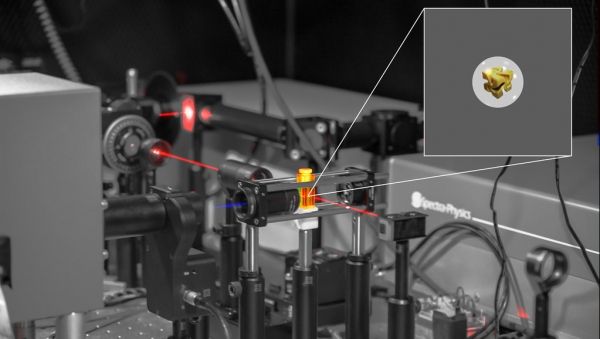For the first time, a single, twisted nanoparticle has been accurately measured and characterised in a lab, taking scientists one vital step closer to a time when medicines will be produced and blended on a microscopic scale.
Physicists at the University of Bath who study materials on the nanoscale – that is, molecules 10,000 smaller than a pinhead – made their groundbreaking observations using a new method for examining the shape of nanoparticles in 3D. This technique, called the hyper-Rayleigh scattering optical activity (HRS OA) technique, was used to examine the structure of gold (among other materials), resulting in an exceptionally clear image of the ‘screw thread’ twist in the metal’s shape.
Understanding the twists within a material (known as its chirality) is vital in industries that produce medicines, perfumes, food additives and pesticides, as the direction in which a molecule twists determines some of its properties. For instance, a molecule that twists clockwise will produce the smell of lemons while the identical molecule twisting anticlockwise (the mirror image of the lemon-smelling molecule) smells of oranges.
Read more at University Of Bath
Image: The twist of a single nanoparticle, floating freely in a liquid. CREDIT: University Of Bath


